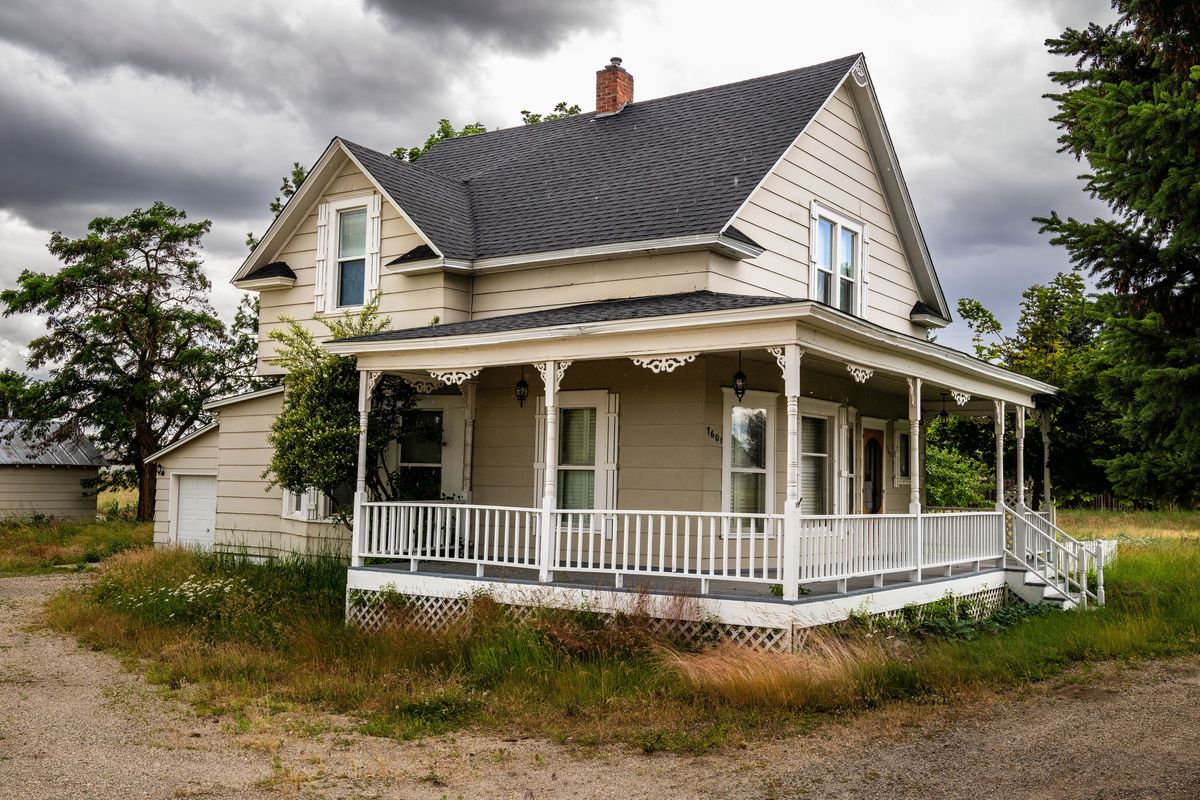Beloved Five Mile farmhouse may be demolished for apartments

A century ago, structures were sparse on the Five Mile Prairie.
It comprised of large properties for farms and ranches for those who sought to make a life outside the fledgling rail town of Spokane to the south.
Today, the sprawling prairie that sits atop a sizable bluff is now home to impressive residences with manicured lawns and private pools.
But one quaint farmhouse-style home, built in 1906, remains. Perhaps not for much longer, though.
At 7601 N. 5 Mile Rd., the roughly 2-acre plot is being eyed by Spokane-based Pine View Development for an apartment complex.
The firm submitted plans to the city of Spokane earlier this year to build four three-story structures, each containing 12 units, on the site.
Last week, officials at the firm applied for permits to demolish the 1906 home and make way for the structures, according to city records.
During the public comment period for the project, residents of the neighborhood submitted an outcry of testimony.
Many submitters are fearful of growth to the area because it receives some of the worst emergency response times of any place in town, which is verified by city findings.
Others worry a few dozen market-rate rental units may jeopardize the character of an area that averages a median household income more than double the citywide average, according to a 2020 report from the Five Mile Prairie Neighborhood Council.
No matter their motivation, residents of the area overwhelmingly opposed the project that would erase a long-standing symbol of their community.
“This farmhouse is a landmark here on Five Mile Prairie, standing for 118 years,” Delores Ames wrote, “must we destroy more of Spokane and Five Mile Prairie history?”
Constructed two years before the advent of the Model T automobile and decades before Five Mile Prairie was annexed to Spokane proper, the home was void of reliable access to water and sewer utilities. It likely operated as a classic homestead.
Nearby is the Five Mile Prairie Schoolhouse, which was built a few blocks north and a few years before the home. It is listed on the National Register of Historic Places.
The designation adds protections from it ever being demolished. The Five Mile Prairie farmhouse has no historic designation.
“So one more vestige of Old Spokane and the agricultural heritage of the prairie will be lost,” wrote Mirna Tohmeh. “This damages the character and charm of the Five Mile Prairie and Spokane.”
Many of the public comment submissions claim the home was a product of the Sears, Roebuck Catalog Homes – easy-to-build kit houses delivered by mail, popular in the early 20th century.
But according to Megan Duvall, Spokane Historic Preservation officer, little is officially known about the dwelling.
This is why Randy Abrahamson, the Spokane Tribe of Indians Historic Preservation officer, requested a cultural resource survey be completed, which will detail the home’s history and inventory its components, according to Duvall.
“It doesn’t look like the cultural survey report was added into the system,” Duvall wrote in an email. “There should be no ground disturbing activities (including demolition) until a Cultural Resources report is received.”
Though demolition is not immediately imminent, Dave Shockley, executive coordinator for the Spokane Preservation Advocates, hopes developers will consider alternatives.
“It would be less expensive for the developer to let someone move it than it would be for them to demolish it,” Shockley wrote in an email. “There must be a place somewhere on the Five Mile prairie for this home to be relocated.”
Andrew Spelman, owner of Pine View Development, said he tried.
“All the way back to when I bought the property in 2022, right out of the gate, the notion was to move the house,” Spelman said. “We talked to movers, and we had brokers out looking for extra lots.”
Then in January, when droves of property owners in the Inland Northwest had their pipes broken in a cold snap, the home was damaged.
A pipe in its upstairs had burst.
After noticing water usage spiking, city workers shut off water to the property, but it was too late, Spelman said.
“The basement had 6 feet of water in it, and the house inside was an absolute disaster,” he said, “to the point I would say it’s not savable.”
Though he believes the house is in too poor of condition to relocate, Spelman will save what he can.
“We’re going to try to reclaim a lot on the floors, we can save doorknobs, handles, there is some stained glass that still in great condition,” he said. “Little pieces like that, we’re going to salvage.”
Spelman is sensitive to those that will be saddened at the loss of the home, he said. And he is sensitive to the wishes of those who want to keep Five Mile a neighborhood for single-family homes.
That is why he opted to build four residential buildings instead of the maximum five that is deemed allowed by city density regulations, he said.
“Everyone wants more housing and more affordable housing as it relates to the housing crisis, but nobody wants it there. I’m sympathetic to it,” he said. “But we’re just doing what the city’s allowing us to do: no deviations or variances or changes to code.”
If allowed by the city, the project would take about a year to complete. If it is, Spelman is unsure of what will come next.
“I live on Five Mile,” he said. “I’m nervous, to be quite honest.”